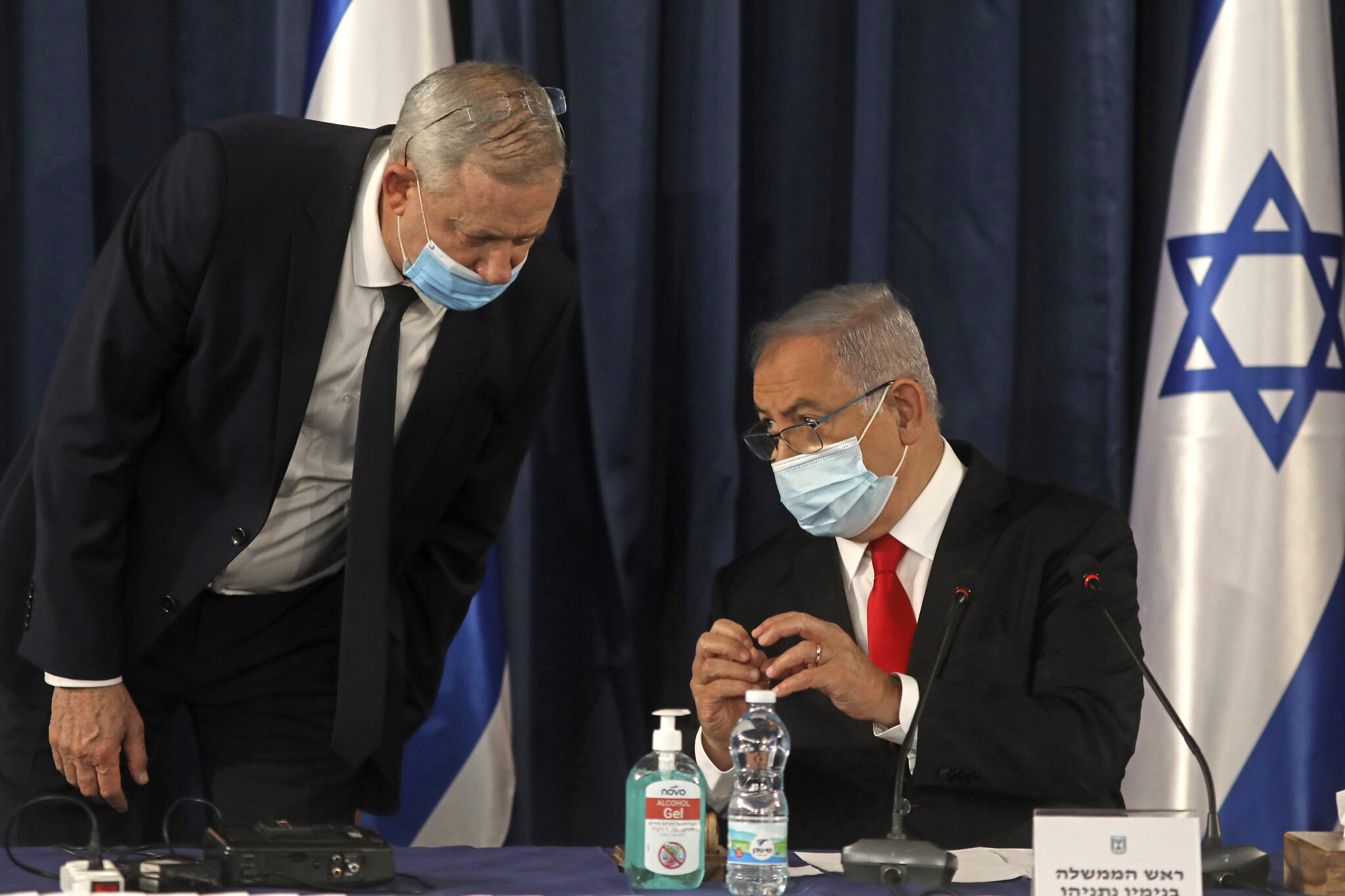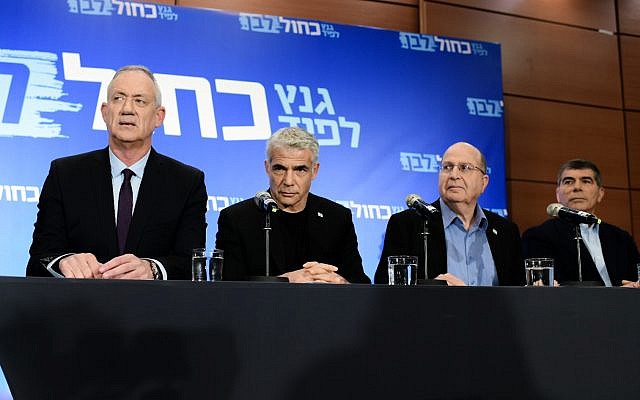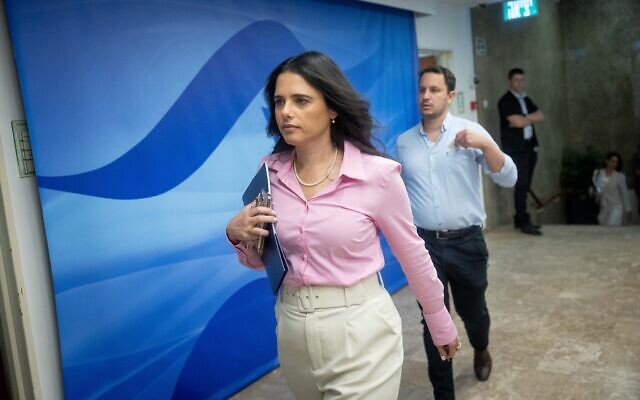In microeconomics and game theory, the median voter theorem states that “in a majority rule voting system, the candidate or party most preferred by the median voter will be elected.”
While Israel has an extremely diverse political landscape, with 13 parties in the current Knesset, modern Israeli politics has often been a battle over this median voter, or what commentators call the “soft right.”
At this juncture, it is important to note that the right and left in Israel today are not what foreign readers may be used to. In Israel, right and left are generally not defined by economic ideologies or social platforms. Instead, the words “right” and “left” have become identity markers (and of course slurs), often revolving around attitudes toward peace, the Palestinians, and more recently, issues relating to democracy and the judiciary.
There is also a large degree of “tribal identity” – if you were born to a right-wing family in Netivot, or a left-wing family in north Tel Aviv, data suggests your children and your neighbors will vote in a similar way. Economics, fiscal policy, and debates about big government versus small government do not contribute much to Israel’s delineation between right and left, nor does the issue of religion and state. Israel, for example, has self-defining right-wing secular parties, and religious parties whose social welfare policies (and voting patterns) can be firmly on the left.
Many pollsters and strategists (including the authors) have conducted polls and focus groups in an attempt to map out and define the “soft-right” — demographically, geographically and psychographically.
Some characteristics and patterns do stand out. The voters tend to be more traditional in terms of religiosity, and more hawkish on security and peace. In many focus groups, we also came across traditional Likudniks, of the Benny Begin or Dan Meridor ilk, who had simply lost faith in the personalization of the party.
But perhaps the most unique feature of this part of the electorate is that there is no defining feature. It’s your median voter. It’s the closest thing Israel has to a norm.
So, what does that leave in the center? Well, if we’re judging by the median voter, or perhaps even the mean voter, the soft right is the center.

Then-prime minister Benjamin Netanyahu, right, speaks with Defense Minister Benny Gantz, both wearing protective masks due to the ongoing COVID-19 pandemic, during a cabinet meeting in Jerusalem, June 7, 2020. (Menahem Kahana/Pool Photo via AP)
Ever since the collapse of the Oslo peace process in 2000, the center of gravity of Israeli politics has shifted rightwards. Polls show that around 40 to 45 percent of Jewish Israelis today define themselves as being broadly right-wing, and 30-35% define themselves as being in the center, center-left and left. The remaining 20%-25%, including the median voter, see themselves as “center-right.”
Every prime minister in the past two decades could to some extent claim to lead this camp of the median voter, from the Kadima governments of Ariel Sharon and Ehud Olmert through the early years of Benjamin Netanyahu’s second stint in office.
Ephemeral parties have also sprung up with real success in appealing to this amorphous group of voters; from Yosef (Tommy) Lapid’s Shinui party, which took 15 seats in 2003, to Moshe Kahlon’s Kulanu in 2015. Lapid’s son, current interim Prime Minister Yair Lapid, also attempted to capture the space of the soft-right median voter upon entering politics, and again after leaving the government in 2015.

Then Finance Minister Yair Lapid (L) and Prime Minister Benjamin Netanyahu at a 2013 press conference. (Flash90)
In recent years, as Netanyahu has gradually moved away from this median voter, flirting with extremist elements, anchoring his governments to the ultra-Orthodox, and attacking the judiciary and rule of law, a fertile patch of soft-right ground has been left for the taking.
It is within this context that last week’s Blue and White-New Hope merger should be viewed. By choosing Gideon Sa’ar (and rejecting a merger with Labor in the build-up to the last elections), Benny Gantz and his Blue and White party are seeking to appeal to this median voter. With Lapid now firmly in the center-left, Gantz and Sa’ar hope that this partnership can best position their slate to win over “soft right” voters, and ultimately, lead the center-right camp.

Left to right: Blue and White party leaders Benny Gantz, Yair Lapid, Moshe Ya’alon and Gabi Ashkenazi are seen at a press conference in Tel Aviv on March 18, 2019. (Tomer Neuberg/Flash90)
For Gantz, there is nothing new here. His first move after joining politics was to join up with Moshe Ya’alon, another right-wing former leading member of Likud. And throughout three election campaigns in which he led the centrist bloc, Gantz always sought to position the party slightly to the right of center.
This was accentuated by the fallout from his decision to form a unity government with Netanyahu in 2020, which pushed center-left and centrist former Blue and White voters into Lapid’s arms, while those who leaned rightward mostly stayed with Gantz.
This week’s polling, giving the party 13-14 seats, comes as no surprise. New parties tend to poll well upon announcement, but that support often trickles away. Indeed, last time around, Saar’s New Hope collapsed from 19 to six in the space of a few months, while veteran Tel Aviv Mayor Ron Huldai’s The Israelis party was polling close to double figures upon announcement, only to disintegrate completely in a matter of weeks.
While the direction of travel is not always one-way, party strategists will be anxious to avoid the same sense of drift as the new alliance becomes old news, with its 13-14 seats ebbing away gradually back toward high single figures (where Blue and White was polling before the partnership was announced).
To a large extent, though, the number of seats the new party takes is less important than which seats it takes. In Israel’s heavily bloc-dominated politics, taking just one or two seats from the opposing bloc can be worth more than 10 or 20 seats from inside one’s own bloc.
If we take the example of Saar’s New Hope in the last round of elections: While it may only have picked up six seats, the result was enough to keep Netanyahu from forming a coalition, and laid the ground for a historic – if short-lived – broad unity government.
While their goal this time around is to win at least double that number of seats, he and Gantz will be hoping their alliance paves the way for a similar outcome this time. One that denies Netanyahu the 61 seats he needs to form a government, and instead enables the formation of a broad national government, led from the center-right (ideally by Gantz himself).
Poll of Polls Update

The state of the Israeli election campaign: July 17, 2022 poll of polls, showing the number of seats parties would be expected to win if elections were held today, based on a weighing of the latest opinion polls.
While the Blue and White-New Hope alliance dominated the political conversation this week (at least until the arrival of US President Biden), it did little to change the polling landscape.
In our poll of polls, the party currently stands at 13.5 seats, a 0.5 seat increase from the parties’ combined total last week (8.5 + 4.5). When it comes to mergers in Israel, the prevailing wisdom is that 2+2 usually adds up to 3 (i.e., that the two parties combined are less than the sum of their parts). At this stage, the two combined are pretty much exactly the sum of their parts.

Interior Minister Ayelet Shaked arrives for a cabinet meeting at the Prime Minister’s Office in Jerusalem on May 15, 2022. (Yonatan Sindel/Flash90)
The major trend – as opposed to the major news – this week is the fall of Yamina, now under the leadership of Ayelet Shaked, which has failed to pass the threshold in each of the past five polls. The effect of this is to push up all the other parties. Of the 11 other parties, eight went up this week in our average, two went down and one was unchanged. The biggest beneficiary at this stage is Yesh Atid, which gained almost an entire seat in our average over the past week.
When it comes to the blocs, the Netanyahu bloc (Likud, Religious Zionism and the Haredi parties) is currently polling at exactly 60 seats, a one-seat increase from last week. The current coalition is polling at 54.2 seats (down 0.4 from last week). (For a reminder about the methodologies behind, and pitfalls of, these polls, see last week’s article on how to make sense of the opinion polls.)
—
Simon Davies and Joshua Hantman are partners at Number 10 Strategies, an international strategic, research and communications consultancy, who have polled and run campaigns for presidents, prime ministers, political parties and major corporations across dozens of countries in four continents.
"soft" - Google News
July 17, 2022 at 05:47PM
https://ift.tt/Q8bHK2f
Allied with Sa’ar, Gantz sets out to crack the ‘soft right’ - The Times of Israel
"soft" - Google News
https://ift.tt/F1XkoIx
https://ift.tt/ZalHDYK
Bagikan Berita Ini














0 Response to "Allied with Sa’ar, Gantz sets out to crack the ‘soft right’ - The Times of Israel"
Post a Comment